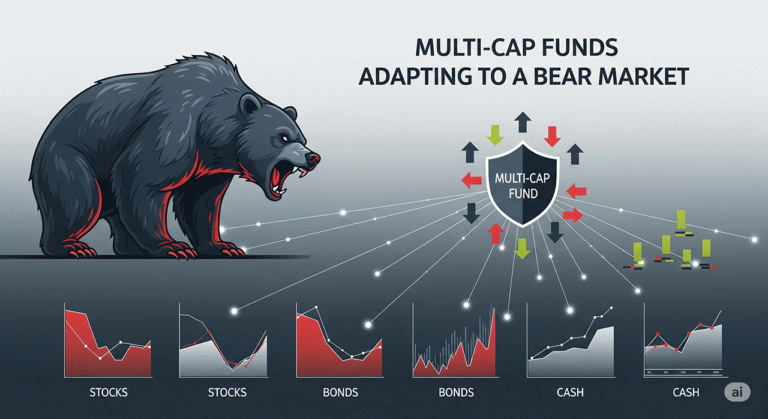
Introduction
The US stock market experienced a downturn following President Trump’s latest tariff announcement, reflecting investor apprehension regarding the potential repercussions on the economy. This development, which resonates amid ongoing trade tensions between the United States and other global economies, has led to increased volatility in the markets. Investors are acutely aware of how tariffs can impact trade dynamics, supply chains, and ultimately economic growth.
In recent weeks, the stock market had seen a period of recovery, with major indices rebounding from earlier losses. However, the announcement of new tariffs has shifted the sentiment, leading many investors to reassess their positions. Analysts note that such policy changes can create uncertainty, prompting a cautious approach among traders. With potential consequences for various sectors—particularly manufacturing and technology—market participants are closely monitoring developments surrounding the tariffs.
Additionally, the economic landscape is characterized by concerns about inflation, interest rates, and the overall state of the global economy. These factors, combined with the shock of new tariff measures, have prompted significant reactions across various sectors of the stock market. A sell-off in major stocks was observed, as fears regarding reduced profitability and disrupted supply chains took center stage.
As the situation evolves, the implications of Trump’s tariffs will continue to unfold, necessitating a thorough examination of subsequent market movements. The balance between protecting domestic industries and fostering international trade relationships remains a critical point of discussion among stakeholders. This prevailing atmosphere of uncertainty highlights the intricate relationship between government policy and market performance, setting the stage for further analysis in subsequent sections of this blog post.
Background on Tariffs and Trade Policies
Tariffs have played a crucial role in the economic history of the United States, shaping both domestic and international trade dynamics. Historically, tariffs have been employed as tools to protect American industries, raise government revenue, and negotiate trade relationships. They have fluctuated in relevance depending on the political landscape, economic conditions, and the preferences of various administrations. Under President Donald Trump’s administration, a notable shift occurred regarding tariffs, marked by a more aggressive stance toward trade policies that sought to prioritize American manufacturing and address perceived imbalances in trade agreements.
One of the key elements of Trump’s trade policy was the imposition of tariffs on a wide range of imported goods. This included metals, textiles, and, most controversially, a series of tariffs on Chinese goods aimed at rejuvenating American industries and reducing the trade deficit. Critics argue that these tariffs contributed to increased costs for consumers and businesses reliant on imported materials. However, proponents assert that they were essential for safeguarding American jobs and encouraging domestic production.
The economic implications of tariffs extend beyond national borders, as they can disrupt supply chains and provoke retaliation from trade partners. For example, following the announcement of tariffs on various products, countries like China enacted their own tariffs on U.S. goods, leading to heightened tensions and a trade war. This complex interdependence illustrates how tariffs affect not only immediate markets but also broader global economic relationships.
The recent announcement regarding new tariffs signals a continuation of this contentious approach, which could further impact both domestic industries and international market conditions. Understanding the historical context of these trade policies provides insight into their potential future effects on the economy and the strategic decisions being undertaken by policymakers in response to global trade dynamics.
Market Response to Trump’s Announcement
On the day of President Trump’s latest tariff announcement, the U.S. stock market experienced significant volatility, with major indices closing lower. The market reaction was immediate and pronounced, highlighting the sensitivity of investors to trade policies and geopolitical events. The Dow Jones Industrial Average fell by over 400 points, a decline that underscored investor trepidation surrounding potential trade wars and their implications for economic growth. The S&P 500 and NASDAQ also mirrored this downward trajectory, with declines of approximately 1.5% and 1.7%, respectively.
Sector-wise, the most affected segments included technology, manufacturing, and consumer goods. Companies with substantial exposure to international markets faced heightened scrutiny, as increased tariffs could directly impact their profit margins and overall competitiveness. The technology sector, in particular, witnessed notable drops as many firms rely heavily on global supply chains and foreign markets for revenue generation. Manufacturers were also on edge, anticipating higher costs associated with imported materials.
Investor sentiment was primarily shaped by concerns regarding escalating trade tensions and potential retaliatory tariffs from affected countries. Many analysts pointed out that this uncertainty leads to a risk-off approach, with investors favoring safer assets such as bonds over equities. Market participants expressed anxiety over the potential for a protracted trade dispute, as Trump’s announcement was viewed as a potential catalyst for further escalation rather than resolution.
As trading progressed throughout the day, the overall atmosphere in the market reflected a cautious stance. While some investors sought to capitalize on lower stock prices resulting from the sell-off, the majority remained hesitant to commit to equities amid such uncertainty. The responses from key indices and market sectors clearly indicated that Trump’s tariff strategy would ripple through the economy, requiring close attention in subsequent trading sessions.
Sector Analysis: Winners and Losers
The recent announcement by former President Trump regarding new tariffs has had a significant impact on various sectors of the US stock market. Understanding these movements is crucial for investors looking to navigate the current financial landscape effectively. In the wake of the tariff news, the **technology sector** emerged as a winner, primarily due to the resilience of major tech giants who have managed to innovate and adapt despite geopolitical uncertainties. Companies in software and cloud computing experienced upward trends as investors sought safe havens amid the turmoil.
Conversely, the **manufacturing sector** saw a notable dip due to its heavy reliance on global supply chains. The introduction of tariffs has raised operational costs for manufacturers, leading to diminished profit margins and stock prices. This decline is particularly evident among companies producing consumer goods, which are now facing the prospect of higher prices and reduced consumer spending. Additionally, the **automotive industry** suffered, as tariffs on imported components could lead to increased production costs and subsequently may result in higher prices for consumers, further dampening demand.
Another sector affected is the **energy sector**, where companies dependent on international markets have seen fluctuations. Given the potential for increased tariffs on energy imports, some firms are re-evaluating their strategies and looking for domestic alternatives. While oil prices remain volatile, a section of the market appears optimistic, banking on continued energy demand despite the tariff-induced challenges.
In summary, the impact of Trump’s tariff announcement illustrates a divided stock market landscape where technology stands as a beacon of strength amidst losses experienced by manufacturing and automotive sectors. Investors must remain vigilant in analyzing sector performance to adapt their strategies in response to these economic shifts.
Expert Opinions and Market Predictions
The recent announcement of tariffs by former President Donald Trump has stirred considerable debate among economists and market experts. Many analysts believe that the decision to implement such tariffs could have significant implications for the US stock market and the overall economy. These tariffs could lead to increased costs for businesses that rely on imported goods, potentially translating to higher prices for consumers. As a result, experts suggest that sectors heavily dependent on global supply chains, such as technology and manufacturing, may face challenges in the short term.
Furthermore, some economists have warned that the tariffs may trigger retaliatory measures from trading partners, resulting in further market volatility. This sentiment is echoed by several market analysts who predict that escalated trade tensions could lead to a downturn in investor confidence, influencing stock prices across various sectors. Reports indicate that investors may become increasingly cautious, leading to a potential slowdown in market recovery following the recent downturn. However, not all experts share a pessimistic outlook; some analysts point to the resilience of the US economy and argue that if managed effectively, the impacts of the tariffs could be mitigated over time.
In a more optimistic perspective, certain financial analysts believe that short-term disruptions could pave the way for long-term restructuring in the US economy. They argue that these tariffs may encourage domestic manufacturing, leading to increased job creation and a bolstering of local industries. For investors, this potential shift presents both opportunities and challenges. The market’s response to these tariffs will likely depend on how policymakers navigate the ensuing complexities and how adaptable businesses are in the face of new economic realities.
Ultimately, the consensus among experts is that the implications of Trump’s tariff announcement are multifaceted, leading to both immediate concerns and potential long-term economic shifts. Investors should remain vigilant and consider a variety of expert opinions when navigating their strategies in the current market climate.
Global Market Impact
The announcement of new tariffs by former President Donald Trump has had significant ramifications not only for the US stock market but also for markets around the globe. Following the news, the immediate response from international indices revealed a ripple effect indicative of the interconnectedness of global economies. Major indices in Europe, such as the FTSE 100 in the United Kingdom and the DAX in Germany, saw declines as investors reacted to the uncertainties surrounding trade policies and their potential impact on economic growth.
In Asia, markets similarly experienced downturns. The Nikkei in Japan and the Hang Seng index in Hong Kong both fell, driven by fears of diminished trade flows that could arise from heightened tariffs. These declines reflect a broader anxiety among investors about the implications of US tariffs, as many European and Asian economies are significantly intertwined with American markets. The prospect of retaliatory measures also brewed concerns that further escalations could stifle global trade, compounding the uncertainty already felt by various sectors.
The interconnected nature of these economies emphasizes the delicate balance in global markets. A significant decision or announcement from the US can instigate notable shifts elsewhere, underscoring the modern financial landscape where markets are often viewed through an integrated lens. For instance, businesses dependent on exports may have to navigate increased costs and alter their operational strategies, resulting in a cascading effect on supply chains worldwide.
As global markets respond to the latest developments in the US, it remains imperative for investors to remain vigilant and informed. Understanding the broader landscape not only aids in comprehension but also emphasizes the importance of strategic approaches when dealing with market volatility. The unfolding scenarios represent critical moments where keen market analysis and timing can significantly influence investment opportunities amid shifting tides.
Investor Strategies in Uncertain Markets
In the context of the recent fluctuations within the US stock market, particularly following the announcement of new tariffs by former President Trump, investors are prompted to reassess their strategies. Tariff-induced volatility can significantly impact market stability, and therefore, a proactive approach is essential in navigating these uncertain times. One of the fundamental strategies investors should consider is asset diversification. By spreading investments across various asset classes, including stocks, bonds, and commodities, investors can mitigate risks associated with market volatility. This strategy serves to buffer against the potential losses resulting from sudden market downturns caused by economic policies, such as tariffs.
Moreover, investors ought to remain vigilant and continuously monitor macroeconomic indicators that could signal further market shifts. This involves staying informed about the global economic landscape and understanding how trade policies might influence specific sectors of the market. For instance, industries heavily reliant on imports may suffer more pronounced effects from tariffs compared to those with domestically sourced supply chains. Therefore, focusing on sectors that demonstrate resilience in adverse conditions can be beneficial.
Another crucial aspect of managing investments in uncertain markets is employing sound risk management practices. This entails setting clear investment goals, analyzing individual risk tolerance, and implementing strategies such as stop-loss orders to limit potential losses. By establishing a structured approach to risk, investors can enhance their decision-making processes, ensuring they remain grounded even when market conditions are turbulent.
In summary, effectively navigating the stock market in light of tariff-related volatility requires a combination of diversification, ongoing economic analysis, and robust risk management. By adopting these strategies, investors can position themselves to endure the uncertainty while potentially capitalizing on emerging opportunities in the market.
Future Developments to Watch
In the wake of recent tariff announcements by the Trump administration, several critical developments are on the horizon that could significantly impact the trajectory of the US stock market. Investors are advised to monitor key economic reports that may provide insights into the health of the economy, as well as how consumers and businesses are responding to changing trade dynamics. Among these reports, the monthly employment figures, inflation rates, and GDP growth rates will be particularly relevant. A robust job report could bolster investor confidence, while any signs of economic contraction may induce further market volatility.
In addition to economic reports, ongoing trade talks are a focal point for potential market fluctuations. Recent negotiations between the US and its trading partners, particularly China, will likely be scrutinized closely. Any announcements regarding the progress of these talks could lead to swift reactions in the stock market. Should negotiations stall or lead to new escalations in tariffs, investors may pivot their strategies accordingly, resulting in a marked shift in market sentiment.
Political events also merit attention as they can introduce significant risk factors to the market landscape. Key legislative developments, including proposed tariffs on additional goods or sectors, can create uncertainty for investors. Moreover, upcoming elections may influence trade policies and overall governmental direction, which could translate into shifts within the stock market. The potential for changes in leadership or policy direction must be factored into investment strategies as they can affect both domestic and international markets.
As we navigate these developments, it is crucial for investors to stay informed and agile, ready to respond to the myriad of factors that could influence market performance in the ongoing context of international trade tensions.
Conclusion
In this blog post, we have examined the recent developments in the US stock market, primarily focusing on the implications of President Trump’s latest tariff announcement. The announcement has resulted in a notable decline in market indices, reflecting investors’ concerns over potential trade tensions and their ramifications on economic growth. This situation underscores the critical interplay between government trade policies and market performance, as uncertainty surrounding tariffs often leads to increased volatility in stock prices.
Our analysis highlighted that the tariffs introduced by the Trump administration could have far-reaching effects on various sectors, particularly those heavily reliant on international trade. Industries such as technology, manufacturing, and agriculture may experience disruptions in supply chains, uncertainty in pricing, and shifts in demand as global trade relationships are reevaluated. As market participants reacted to these developments, we observed pronounced shifts in investor sentiment, leading to widespread sell-offs in major stocks.
Furthermore, the discussion emphasized the importance of staying informed about ongoing changes in trade policies and their broader economic implications. Investors are urged to consider not only the immediate reactions of the stock market but also the long-term effects of tariffs on competitiveness, inflation, and consumer behavior. In an interconnected global economy, understanding these dynamics is essential for making informed investment decisions.
As we continue to monitor the stock market’s response to trade announcements and related policies, it is crucial to recognize the vital role that fiscal decisions play in shaping market landscapes. By keeping abreast of these developments, investors can better navigate through uncertainties and capitalize on opportunities arising from shifting market conditions. The implications of the stock market’s reaction to trade policies will undoubtedly remain a key consideration for market participants in the coming months.







3 thoughts on “US Stock Market Highlights: Market Closes Lower After Trump’s Latest Tariff Announcement”